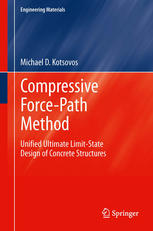

Most ebook files are in PDF format, so you can easily read them using various software such as Foxit Reader or directly on the Google Chrome browser.
Some ebook files are released by publishers in other formats such as .awz, .mobi, .epub, .fb2, etc. You may need to install specific software to read these formats on mobile/PC, such as Calibre.
Please read the tutorial at this link: https://ebookbell.com/faq
We offer FREE conversion to the popular formats you request; however, this may take some time. Therefore, right after payment, please email us, and we will try to provide the service as quickly as possible.
For some exceptional file formats or broken links (if any), please refrain from opening any disputes. Instead, email us first, and we will try to assist within a maximum of 6 hours.
EbookBell Team

4.8
24 reviewsThis book presents a method which simplifies and unifies the design of reinforced concrete (RC) structures and is applicable to any structural element under both normal and seismic loading conditions. The proposed method has a sound theoretical basis and is expressed in a unified form applicable to all structural members, as well as their connections. It is applied in practice through the use of simple failure criteria derived from first principles without the need for calibration through the use of experimental data. The method is capable of predicting not only load-carrying capacity but also the locations and modes of failure, as well as safeguarding the structural performance code requirements.
In this book, the concepts underlying the method are first presented for the case of simply supported RC beams. The application of the method is progressively extended so as to cover all common structural elements. For each structural element considered, evidence of the validity of the proposed method is presented together with design examples and comparisons with current code specifications. The method has been found to produce design solutions which satisfy the seismic performance requirements of current codes in all cases investigated to date, including structural members such as beams, columns, and walls, beam-to-beam or column-to-column connections, and beam-to-column joints.